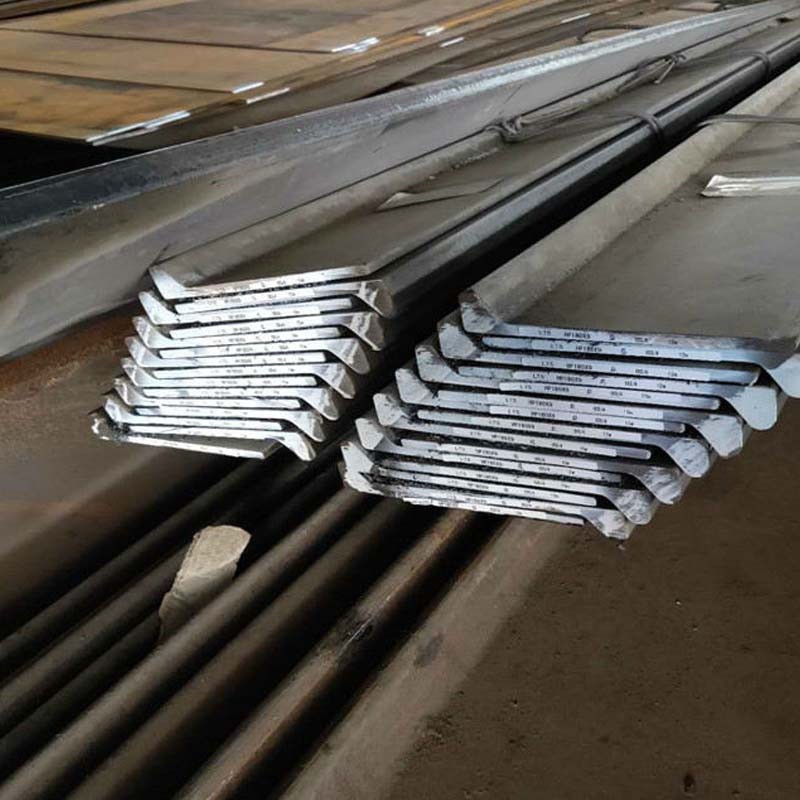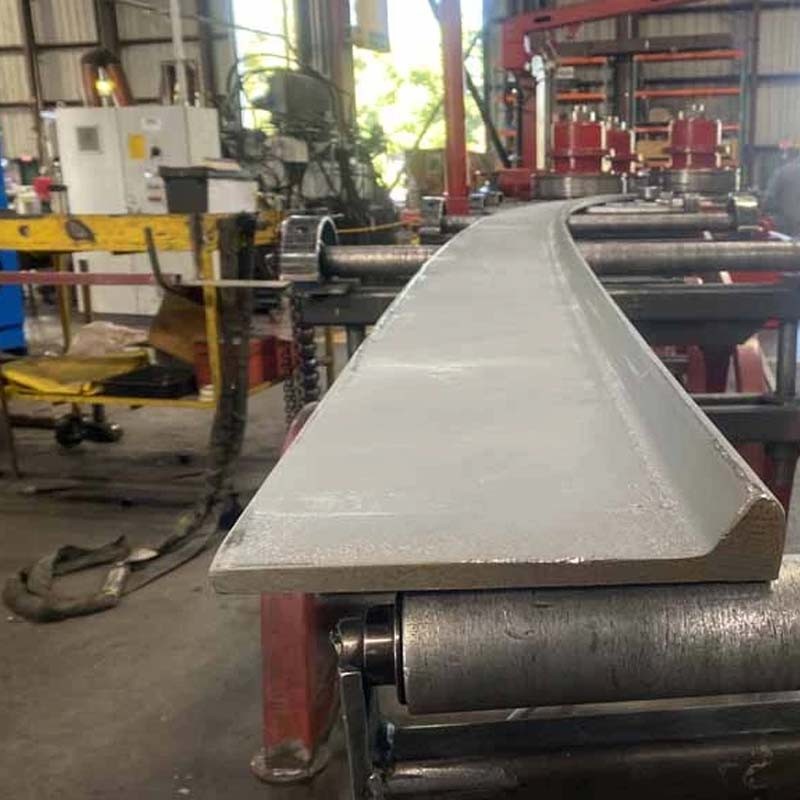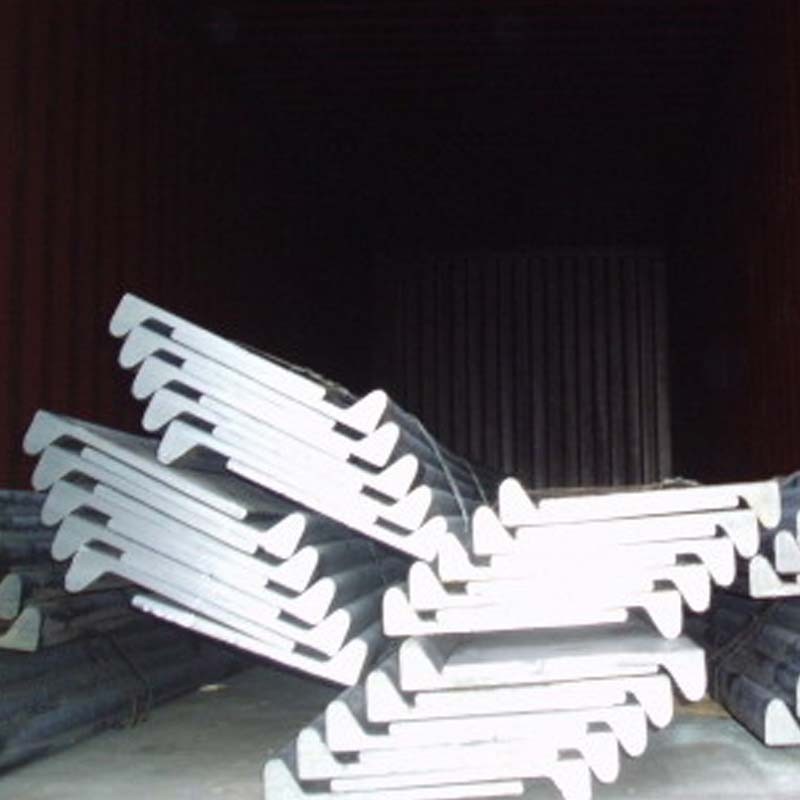
Bulb flat steel is a kind of special steel, which is composed of a flat web and a spherical ball head. It is an asymmetric steel. Bulb flat steel is mainly used in shipbuilding and bridge building. Bulb flat steel has many excellent properties , making it an ideal choice for many industries.
Bulb flat steel is a kind of steel with a special shape. Its cross-sectional shape shows a combination of spherical and flat shapes. The characteristics of spherical flat steel will be explained in detail from the following aspects.
1. Unique appearance
The cross-sectional shape of the bulb flat steel is unique, showing a combination of spherical and flat shapes. Compared with the traditional round or square cross-section steel, the bulb flat steel is more beautiful and generous, which can bring unique visual effects to the project.
2. Excellent strength
Ball flat steel is made of high-quality steel and has high strength and rigidity. It can withstand large pressure and load, has good bending and tensile properties, and can meet the needs of parts with high strength requirements in engineering.
3. Lightweight design
Compared with traditional steel, ball flat steel has a lighter weight. Due to the particularity of its cross-sectional shape, the bulb flat steel can reduce the amount of materials used while ensuring the strength, realize lightweight design, reduce the self-weight of the project, and improve the bearing capacity of the structure.
4. Easy to process
Spherical flat steel has good plasticity and weldability, and can be easily processed by cutting, bending, stamping and welding. This makes the application of bulb flat steel in the engineering field more flexible and diverse, and can meet the needs of different engineering projects.
5. Excellent corrosion resistance
Bulb flat steel usually adopts surface treatment processes such as galvanizing or plastic spraying, which can effectively improve its corrosion resistance. This enables the flat bulb steel to be used stably for a long time in both indoor and outdoor environments, extending its service life and reducing maintenance costs.
6. Environmentally friendly and sustainable
The production process of bulb flat steel is relatively environmentally friendly, and its materials can be recycled and reused, reducing the waste of resources. Bulb flat steel also has low energy consumption and environmental pollution during use, which meets the requirements of modern engineering for environmental protection and sustainable development.
7. Wide applicability
Bulb flat steel has a wide range of applications and can be used in various engineering projects such as construction, machinery manufacturing, shipbuilding, bridge engineering, and road guardrails. Its unique shape and excellent performance enable the flat bulb to meet the material requirements of different engineering projects.
8. Economical and practical
The production cost of bulb flat steel is relatively low, and it can exert high performance during use, and has good economic benefits. Bulb flat steel has been widely used in the engineering field and has become an economical and practical building material.
Application of Bulb Flat Steel in Engineering Field
Bulb flat steel, as a special shape of steel, has been widely used in the field of engineering. The following will elaborate on the application of bulb flat steel in the engineering field from the following aspects.
1. Construction field
Bulb flat steel can be used in beams, columns, floors and other parts of building structures, and can withstand large loads and pressures. Its unique appearance and excellent strength make buildings more beautiful and stable, and can meet the needs of different construction projects for structural materials.
2. Machinery Manufacturing
Bulb flat steel can be used in the production of parts in machinery manufacturing, such as bearings, gears, transmissions, etc. Its excellent strength and wear resistance make the mechanical equipment more stable and reliable, and improve the service life and operating efficiency of the mechanical equipment.
3. Shipbuilding
Bulb flat steel can be used in the manufacture of hull structures and ship equipment in shipbuilding. Its lightweight design and corrosion resistance make the ship more energy-saving and environmentally friendly, reduce the ship's dead weight, and improve the ship's load capacity and sailing speed.
4. Bridge engineering
Bulb flat steel can be used in bridge girders, bridge decks and other parts in bridge engineering, and can withstand large loads and vibrations. Its excellent strength and rigidity make the bridge more stable and safe, and can meet the requirements of different bridge projects for structural materials.
5. Road guardrail
Spherical flat steel can be used in the production of road guardrails to protect pedestrians and vehicles. Its unique appearance and strength make the road guardrail more beautiful and stronger, improving the safety and efficiency of road traffic.
6. Other applications
In addition to the above aspects, flat bulb steel can also be used in petrochemical industry, power equipment, municipal engineering and other fields. Its diverse shapes and excellent properties enable flat bulb steel to meet the material requirements of different engineering projects and has broad application prospects.
Bulb flat steel has the characteristics of unique appearance, excellent strength, lightweight design, easy processing, excellent corrosion resistance, environmental protection and sustainability, wide applicability, economical and practical, etc. In the field of engineering, bulb flat steel is widely used in various engineering projects such as construction, machinery manufacturing, shipbuilding, bridge engineering, road guardrails, etc., providing important support for the stability, safety and aesthetics of the project.







|

|

|

|

|
| Timely Info | Independent | Platform | Multiple guarantees | Self-operated storage |
| About us | Channel | Useful tools |
|---|---|---|
| About China Steel Market | Prices | Steel Weight Calculation |
| Contact Us | Answers | Why Choose Us |
| Terms & Conditions | Inventory | |
| Privacy Policy | Help |
Hot search words: